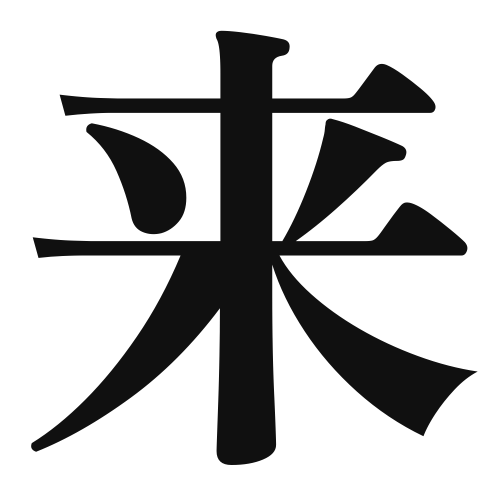1. Overview of Meaning
The kanji “来” (pronounced “rai” or “ku”) means “to come” or “to arrive.” It is commonly used to indicate movement towards the speaker or a specific location.
2. Formation and Radical
Formation of the Kanji: The kanji “来” is classified as a phonetic-ideographic character (形声文字). It combines a phonetic component with a meaning component, representing the concept of coming or arriving.
Radical: The radical for “来” is “来” itself, which is also the complete character.
3. Examples of Usage
Common Words and Phrases:
- 来る (くる, kuru) – to come
- 来週 (らいしゅう, raishuu) – next week
- 来年 (らいねん, rainen) – next year
Example Sentences in Daily Conversation:
- 明日、友達が来る。 (あした、ともだちがくる。) – My friend is coming tomorrow.
- 来週の会議は重要です。 (らいしゅうのかいぎはじゅうようです。) – The meeting next week is important.
4. Synonyms and Antonyms
Similar Kanji:
- 行 (いく, iku) – to go (indicates movement away from the speaker)
Antonyms:
- 去 (さる, saru) – to leave or depart (indicates moving away from a place)
5. Cultural and Historical Background
Relation to Japanese Culture: The concept of “coming” is significant in Japanese culture, often associated with hospitality and welcoming guests.
Proverbs and Idioms:
- 来る者は拒まず (くるものはこばまず) – “Welcome those who come.” This phrase emphasizes the importance of hospitality.
